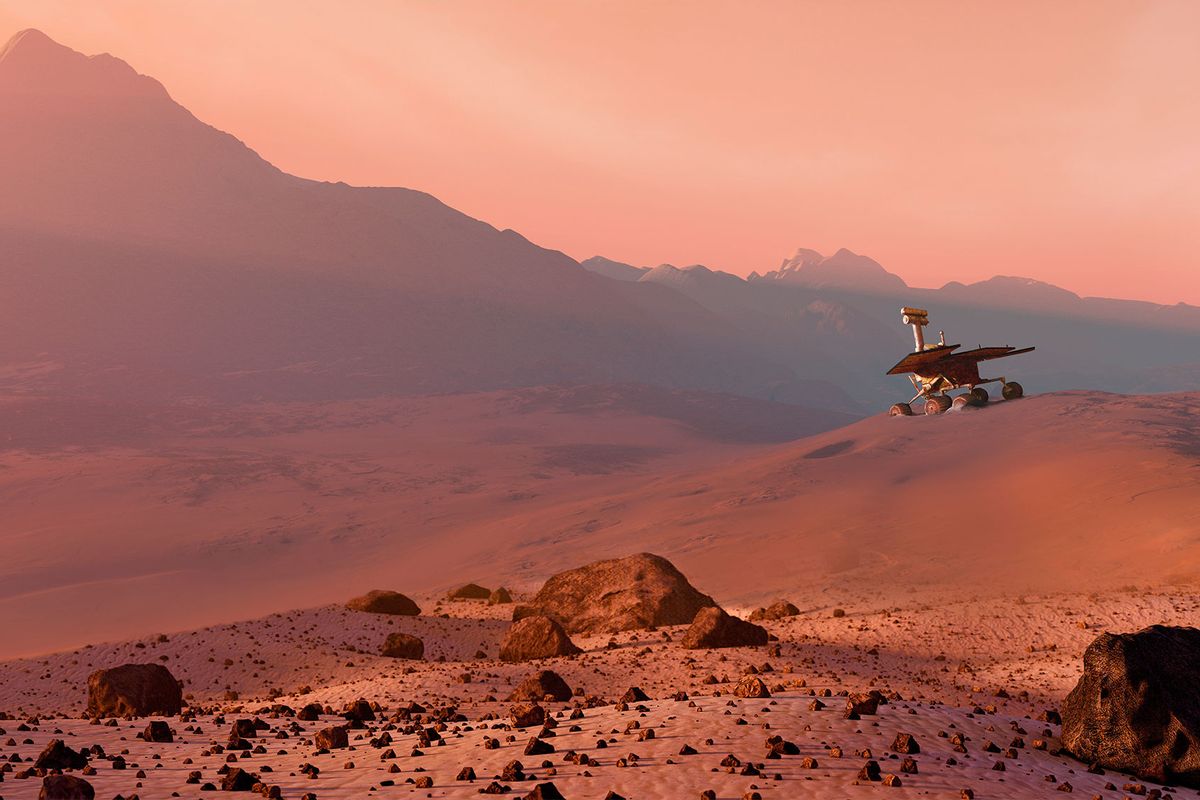Mars, our planetary neighbor with a similar geologic history, has long been a fascination of Earthlings. Part of that is its proximity to Earth — meaning it's the most-visited planet (by robots, at least); and part of that is because of a number of hopeful yet faint signs that perhaps life once existed there. These hopeful signs run the gamut from a flower-shaped rock; to the presence of tiny electrical storms; to the ever-present possibility that liquid water exists somewhere on the Martian surface or perhaps once did.
"It's possible that life appears regularly in the universe. But the inability of life to maintain habitable conditions on the surface of the planet makes it go extinct very fast. Our experiment takes it even a step farther as it shows that even a very primitive biosphere can have a completely self-destructive effect.""
Yet a new paper in the journal Nature Astronomy has an intriguing premise for the history of life on Mars. We know from geologic evidence that the red planet underwent a significant climate shift in its younger years, one which made it much more arid and less watery. The reason for this climactic shift is not well understood, and the aforementioned paper suggests that climate change, caused by gaseous emissions from life on Mars, may have also destroyed the planet's biosphere.
In a study by French and American researchers, scientists explained that life may have flourished in Martian regoliths (or loose dust and rock on top of a layer of bedrock) because it would have been suffused with salt water and protected from ultraviolet and cosmic radiation. Of course, this would have been roughly 3.7 billion to 4.1 billion years ago, and the life in question would have resembled Earth microbes rather than anything particularly intelligent or sophisticated. Yet these microbes could have flourished to a sufficient degree to consume hydrogen and carbon dioxide, both of which would have existed in troves on Mars at the time — and to release methane.
We know this because, on Earth, microbes like that already exist in hydrothermal vents, and they too release methane using a process known as methanogenesis. Because they do so in the ocean, however, little methane gets released into that atmosphere, as it is absorbed somewhat by the ocean water. These hypothetical Martian microbes would not have had that luxury, and the subsequent release of methane may have altered the planet's atmosphere so much that it eventually became hostile to the microbes.
Want more health and science stories in your inbox? Subscribe to Salon's weekly newsletter The Vulgar Scientist.
"The predicted atmospheric composition shift caused by methanogenesis would have triggered a global cooling event, ending potential early warm conditions, compromising surface habitability and forcing the biosphere deep into the Earth crust," the authors write. They add that, for future explorers to test their hypothesis, they should target "lowland sites at low-to-medium altitudes," as these are the regions where life forms that behaved this way would most likely have left traces for humans to someday discover.
The life in question would have resembled Earth microbes rather than anything particularly intelligent or sophisticated.
Humans are well-acquainted with the idea of man-made climate change, for which there is scientific consensus that the emissions of industrial civilization, particularly of carbon dioxide, are slowly altering the temperature of the planet. Yet the idea of simple life, perhaps even single-celled life, altering a planet's atmosphere so much as to change its climate is not far-fetched. Indeed, at multiple points in Earth's history such a thing has transpired. Between 2 billion and 2.4 billion years ago, algae converted so much carbon dioxide into oxygen as to permanently alter the composition of Earth's atmosphere. The Great Oxygenation Event, as it is known, also led to the creation of the protective ozone layer around Earth, which shields land-dwelling life from harmful ultraviolet rays. Both of these events permanently changed the future evolutionary history of life on Earth, as well as the climate.
But while the Great Oxygenation Event rendered Earth more inhabitable for some life and less habitable for others (particularly anaerobic bacteria), the prospect of Martian life rendering its own planet inhospitable has an eerie similarity to humanity's behavior today. Man-made climate change is expected to cause sea levels to rise, increase the number of pandemics, cause heat waves and render large areas of the planet uninhabitable, lead to more wildfires and in other ways destroy Earth life as we know it. The parallels between Earth's current predicament and the one that may have existed on Mars billions of years ago was not lost on the authors of the study.
"The ingredients of life are everywhere in the universe," astrobiologist Boris Sauterey from the Institut de Biologie de l'Ecole Normale Supérieure (IBENS) in Paris, France, who led the research, told Space.com. "So it's possible that life appears regularly in the universe. But the inability of life to maintain habitable conditions on the surface of the planet makes it go extinct very fast. Our experiment takes it even a step farther as it shows that even a very primitive biosphere can have a completely self-destructive effect."



Shares